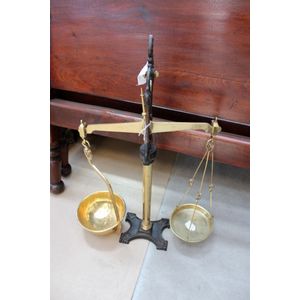Neoclassical Walnut Desk Chair with Gilt Mounts
You must be a subscriber, and be logged in to view price and dealer details.
Subscribe Now to view actual auction price for this item
When you subscribe, you have the option of setting the currency in which to display prices to $Au, $US, $NZ or Stg.
- Mounts - Mounts are used to describe bronze, brass and ormolu adornments on furniture especially quality furniture in the rococo and classical revival style, and are also the cabinet makers' name for the metal fittings on furniture, such as hinges, locks and handles, and metal edges and guards which protect furniture from damage.
- Burr - Burr (or in the USA, burl) is the timber from the knotted roots or deformed branch of the tree, which when cut, displays the small circular knots in various gradations of colour. It is always cut into a decorative veneer, most commonly seen as burr walnut on 19th century furniture.
- Rosette - A stylised circular-shaped disk with turned or carved decoration decoration applied to a surface, or carved into the surface, especially used in ceramics, jewellery, furniture, sculpture and textiles. Also known as a boss or a paterae or patera.
- Cane in Furniture Making - Cane, as used to make furniture is harvested from the ratan palm. The rattan palm is a type of climbing palm that is native to tropical regions of Asia and Africa. The stem of the rattan palm, also known as cane, is harvested, stripped of its skin, and then used to make a variety of furniture items. Rattan furniture is known for its durability, lightness and natural beauty. The cane is flexible yet strong and can be woven into various patterns, making it suitable for a wide range of furniture styles from traditional to modern. The furniture made from rattan cane is also known for its durability and resistance to extreme weather conditions. Popular items include chairs, tables, sofas, and cabinets. The natural colour of the cane can be preserved or it can be stained or painted for different looks.
- Cross Banding - A decorative veneer, up to about 2 cm wide, laid at right angles to the parallel grain of the main carcase, continuing around the edge of the piece, used around the edges of table tops, drawer fronts, tops of chests and desks, and sometimes on door frames. The cross band may be either in the same or contrasting timber to the carcase and the joint may be sometimes hidden by a line of stringing or herring-bone banding. Cross banding is found on furniture constructed both of solid and veneered timber. Where solid timber is used, a rebate will have to be cut to accommodate the cross band, so that the upper surface of the piece is flush. However, due to the natural shrinkage of timber over the years, the cross banding will have been pushed up in places, and the joint can be felt by the fingertips. If the cross banding is completely flush or even countersunk below the surface of the carcase and shows no other evidence of strain, it may very well have been a more recent addition.
- Bronze - An alloy of copper and tin, traditionally in the proportions of about 9 parts of copper to 1 part of tin.
The discovery of bronze in Western Asia in the 4th century enabled people to create metal objects which were superior to those previoulsy possible because of its strength and hardness, and it has been used throughout the world for weapons, coins, tools, statuary and other decorative items.
It is very fluid in a molten state, and its hardness, strength when set, and non-corrosive properties makes it most suitable for casting sculpture. - Anthemion - An anthemion is a classical decorative design element based on the acanthus flower that consists of a central circular or oval motif surrounded by radiating petals or leaves. It is often used as a border or frieze in architecture, furniture, and other decorative arts. The anthemion is derived from the palmette, a motif that was popular in ancient Greek and Roman art and architecture. It is often associated with the classical world and with Neoclassical style, and it is often used to add a sense of grandeur and formality to a design. The anthemion is also known as a honeysuckle or honeysuckle ornament. It continues to be used in a variety of contexts today, and it is often admired for its elegant and decorative qualities.
- Reeding - A series of parallel, raised convex mouldings or bands, in section resembling a series of the letter 'm'. The opposite form of fluting, with which it is sometimes combined. Reeding is commonly found on chair legs, either turned or straight, on the arms and backs of chairs and couches and around table edges in the Neoclassical or Classical Revival manner. Reeding was also used as a form of decoration during the Edwardian period, but it is usually much shallower and evidently machine made.
This item has been included into following indexes:
- chairs, singles / pairs / threes, style or period
- chairs, singles / pairs / threes, timber - walnut 705
Visually similar items

A Wedgwood inkwell, the lid in brass with rope decoration and a Wedgwood plaque to the top, brass rim and glass and brass inkwell in the interior, the lid with Victorian registration diamond. 8 cm x 9 cm

A George II oak elbow chair, the shaped top rail above a vase shaped splat and out swept arms, a drop in seat on cabriole legs terminating in pad foot

Set of brass and iron balance scales

A single Victorian mahogany chair, mid 19th century, the spade back chair with a gently shaped midrail with foliate scrolled ends and slender ring turned and tapering legs; upholstered in a cream self patterned diamond and floral fabric. Height 89 cm. Widt
